[full_width]
[/full_width]
Buy a .45-70 on GunsAmerica: https://www.gunsamerica.com/Search.aspx?T=henry%20.45-70
Buy a .30-30 on GunsAmerica: https://www.gunsamerica.com/Search.aspx?T=henry%20.30-30
Read more at Henry: https://www.henryrifles.com/henry-rifles/
The Henry Repeating Arms Company has listened to customer suggestions, complaints and issues to address a few problem areas on a couple of their rifles. I reviewed the two rifles in question last year. That complete first review is below should you want to see what my originals thoughts where on the guns.
[one_half]
[/one_half][one_half_last]
[/one_half_last]
Large Caliber Rifles
These rifles are part of the collection of guns that Henry calls Large Caliber Rifles. The original Henry’s (the 19th century ones) and the first offerings from the new Henry Repeating Arms Company were all in rimfire or pistol calibers. It wasn’t until a couple of years ago that Henry came out with rifles chambered in more traditional rifle calibers. They chose two of the most classic and capable American rifle cartridges–.30-30 and .45-70.
Henry sent us one of each of these rifles in the blued steel frame version. They also offer these in brass and color case hardened. The guns sent for this review are identical to the ones sent before save for the changes listed below.
The Updates and Issues
First, some users experienced the original ghost ring sights running out of elevation adjustment before being zeroed. I did not experience this particular issue, but I did not like the huge rear rings on these guns. I like peep style sights and have them on some of my personal long guns, but these were just way too big for shooting tight groups, especially with how wide the front blade was. See below for examples of how big these were and what were able to wring out of them at the range. Now, shooting tight groups on paper is not exactly what these rifles were made to do. These are guns to be used on the field and would be at home behind the seat of your truck. They also make great whitetail and big game hunting rifles. The ghost rings do make for fast target acquisition and are about as good as it gets for quick throw-it-on-your-shoulder-and-pull-the-trigger type work. But it’s not too often I find myself needing to shoot like that in the field.
[one_half]
[/one_half][one_half_last]
[/one_half_last]
Henry completely redid the sights on these. The ghost rings are gone and so is the wide front sight. Now we have the classic, and traditional, semi-buckhorn sights and a brass bead style front. I worked both guns out at 50 and 100 yards with much more acceptable results. One string from the .30-30 was well under an inch at 50 yards. Does the updated rifle get on target as fast as the older version? No, but its not that much slower and I have a lot more confidence I could actually hit the target with the new version.
[one_half]
[/one_half][one_half_last]
[/one_half_last]
The second issue that Henry addressed was one I did not experience on the original rifles. According to Henry, the .45-70 had a tendency for the magazine tube to expand when shooting hotter loads which would cause the magazine locking mechanism to fail. The original design had a barrel band that went around the tube to hold it in place. This band also held the front sight. To fix this issue, Henry scrapped the barrel band and instead made a beefier mag tube and attached it to the barrel with a dovetail joint. This also necessitated the use of the new front sight. The .30-30 version did not have any of these issues reported but Henry went ahead and made the changes to this rifle as well.
[one_half]
[/one_half][one_half_last]
[/one_half_last]
The 3rd and final issue was one that I did have happen to me on the original, but I thought it was a fluke. Henry had numerous reports of levers popping open with a loaded chamber. I recall this happening to me at the range when doing some walking/shoulder firing. I remember thinking that I must have either not closed it all the way, and since it only happened the one time. Either way–if it was my fault or Henry’s, they have corrected the issue was a slight redesign of the action.
Thoughts
I think the changes to these rifles and how Henry has handled them speak volumes about this company. They listened to customer issues and addressed them with changes to their designs. Not only that, if you have one of the older rifles and have had the above issues Henry will make the updated changes to your rifle at no cost. That is some good customer service right there folks. If you are looking for a new lever gun Henry should be at the top of your list.
[one_half]
[/one_half][one_half_last]
[/one_half_last]
[one_half]
[/one_half][one_half_last]
[/one_half_last]
[one_half]
[/one_half][one_half_last]
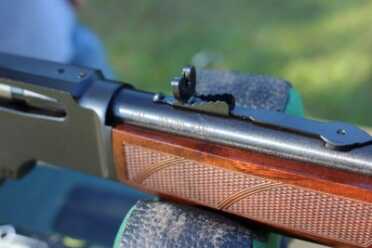
But the new sight system works very well and we found it easier to use than the ghost rings, even though we didn’t have too much difficulty with those, either.
[/one_half_last]
[one_half]

Rock solid performance in a package that looks great from a company that stands up for their work? Not bad.
[/one_half][one_half_last]
[/one_half_last]
Read the rest of our Henry coverage: https://www.gunsamerica.com/blog/?s=henry.
For a more complete look at the guns, keep reading the original review.
Buy a .45-70 on GunsAmerica: https://www.gunsamerica.com/Search.aspx?T=henry%20.45-70
Buy a .30-30 on GunsAmerica: https://www.gunsamerica.com/Search.aspx?T=henry%20.30-30
Read more at Henry: https://www.henryrifles.com/henry-rifles/
Henry Repeating Arms takes its name from the inventor of the first reliable repeating rifle, Benjamin Tyler Henry. That took place back in 1860—when most rifles were still loaded from the muzzle end. In 1996 the Henry name was revived and the brass framed lever guns were once again available. Made in America, too. That’s a big point of pride for Henry.
Most of the offerings from Henry have been in line with the guns designed by their namesake—pistol caliber lever actions. These guns make versatile ranch guns, and are popular with the weekend cowboys who pop steel bad guys. I have a deep respect for lever guns in pistol calibers, but there are times that you need more. Henry has an answer for that now with two new lever actions. They now have a rifle in the classic deer hunting .30-30 and one in the old hard hitting favorite, 45-70. Lever actions, yes, but miles away from the pistol calibers you might associate with the brand.
There are a couple of things that make a Henry a Henry. One is the side ejection found on all models, excluding the reproduction of the original Henry design (the one from the 1860s). The other is the way they load. All of the Henrys load from the muzzle end of the tubular magazine. A spring loaded brass tube that rides inside the magazine keeps the rounds in place and pushed to the rear for feeding. This is a take on the way the original Henry loaded. This is not the more common loading gate on the side of the receiver that Winchester and Marlin use. Using the loading tube sometimes takes a little work and getting used to. You have to wiggle it around and twist as you push it closed to clear the rounds.
Made in the USA
Before we get into the meat of this review on the two Henrys, I want to take a few words to talk about the Made in The USA aspect of the brand. Winchesters are not made in the States any longer. Call me patriotic, but I just feel there is something inherently wrong with a Japanese made version of “The Gun That Won The West.” The American West that is, not West Tokyo.
If you are one who tracks trends in the firearms industry, pay attention to patriotism. My bet is that “Made in America” is about to become wildly fashionable. Henry isn’t going to remind you they make their guns in the states—it has been such a core part of the company’s identify. If you want a newly manufactured American made lever action rifle, Henry is on your short list. But there is more to them that just being made in The States—they are solid and reliable firearms.
[one_half]
| .30/30 Steel with Round Barrel | |
|---|---|
| Model Number | H009 |
| Action Type | Lever Action |
| Caliber | .30-30 |
| Capacity | 5 rounds |
| Length | 39″ |
| Barrel Length | 20″ |
| Weight | 7 lbs. |
| Stock | Deluxe checkered American walnut, rubber buttpad |
| Sights | XS Ghost Rings sights |
| Features | Sling swivels |
| M.S.R.P. | $749.95 |
| .30/30 Brass with Octagon Barrel | |
| Model Number | H009B |
| Weight | 8.3 lbs. |
| Stock | Straight-grip American Walnut, buttplate |
| M.S.R.P. | $950.00 |
[/one_half]
[one_half_last]
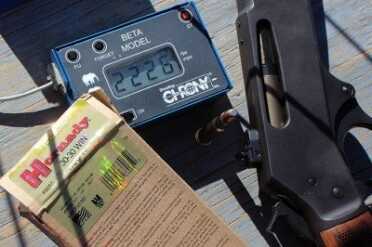
We originally ran a photo here of a chrony reading that was way off–1,490 or so for the .30-30 LEVERevolution. The three rounds clocked in way too slow. We shot the gun again with different Hornady .30-30, and got speeds like we’d expect. We’re not sure what the problem was, and have shot all of that batch.
[/one_half_last]
Lets start with the smaller of the two Henrys. These come in two different set ups. There is a version that has the classic brass frame and octagon barrel and, like the review gun, a steel frame with round barrel. Everything else on the two is about the same. They sport a 20 inch barrel, weigh in around 7 pounds, and hold 5 rounds. The American Walnut stock on both is straight and the steel framed version adds some well done checkering. The MSRP on the steel frame is $750 and the brass is $950.
Fit and Finish
These are nice looking rifles. I am a sucker for blued steel and walnut. Are these the prettiest and most blemish free guns I have ever seen? No. But they are well in line for the price point. They are a lot nicer than an el-cheapo imported rifle. On the 30-30 there are a couple of small tool marks here and there. The magazine tube is not over polished and there are a couple of places on the stock that have some filler. Those are the negatives and they are far outweighed by the positives. The finish on the barrel and the receiver is a glossy and deep black. The receiver comes in the box wrapped in a protective cloth sock. This simple little sock shows me that Henry takes pride in their work and wants to help insure it gets to the customer as it left the factory, which isn’t always easy when it is bouncing around between distributors and dealers.
The action is pretty slick out of the box and got smoother the more it was cycled. This is not as smooth as a tricked out Cowboy action lever gun, but this is not meant for competition. Far from it. The .30-30 Henry is not an approved caliber for SASS shooting. This is a working gun. Don’t let its looks fool you–this is a gun that wants to ride around in the truck, or in a handlebar rack on an ATV. Like a good dog, this gun needs to work.
Sights
The Henry ships with XS Ghost Ring sights. The ones that were on the review guns were large. I mean huge. The rear ghost ring on the .30-30 measured .19″ inside the ring. The one on the .45-70 was even larger: .22″. They were so big that I emailed Henry to make sure there wasn’t a mix up. I was told that they used this ring on the first batch of rifles but had since changed to a smaller size. They shipped me the newer smaller ones and said they would do the same for anyone that has the big ones.
[one_half]
[/one_half][one_half_last]
[/one_half_last]
The front sight is also large. It is built onto the barrel band. The blade is wide. The wide sight, combined with the large ghost ring feels more appropriate for the type of close range shooting the cowboys do. With the new narrow ring installed, the combination becomes more usable.
Either way, it is an interesting sight set up. The ghost rings are incredibly fast. Throw the gun to your shoulder and point and you’re likely in the ring and on target, at least at close ranges. If you are hunting and need to fine tune a shot at 100 yards or more, it is possible. I didn’t find the sight pair as easy to use as some other styles, but it is functional, and I would suspect that I’d get used to the sights in time.
[one_half]
[/one_half][one_half_last]
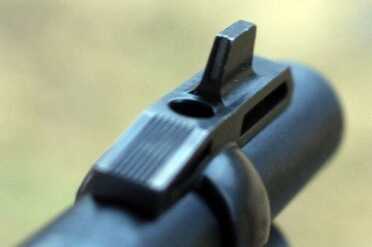
The front blade. Not windage adjustable. The band holds the barrel and the tube below, which centers the blade. Cool trick.
[/one_half_last]
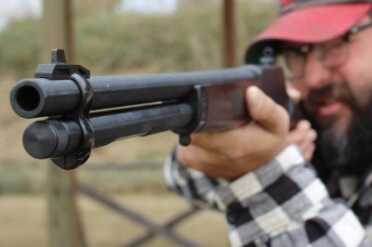
The new Henry Rifles have mid 20th century lines, but are made with some modern touches like the barrel band front sight.
Shooting
The first trip to the range with the .30-30 wasn’t stellar, as I was having trouble adjusting to the sights. At 50 yards it was hard to shoot a group that was under 3 inches. With a good bit of practice, I began shooting closer to what I’d percieved as point of aim, and the groups tightened up to under 2 inches at 100 yards.
I am sure that the rifle is capable of a lot tighter groups. There’s another review to be written still about adding a scope to both of these guns. They are tapped for scope mounts if you should chose to go that route. It isn’t out of the question for me, but I’ve always thought of lever guns as brush guns. They need to be able to reach out past 150 yards, sure, but most of their work will be done at close quarters. I flushed a whitetail this weekend, for example, and I was carrying a .308 with a 3-9 scoped dialed in at 9. I saw the deer at the same time that he saw me, and he bolted. He was too damn close. If I’d had the Henry, I’d have dropped him where he stood. My mistake. This is a .30-30, not a target rifle. I’ll put a scope on it soon, and see what it is capable of with good glass–but for now, I was more interested in what it would do all by itself.
We ran Hornady LEVERevelution 160 Grain through the Henry, along with a random smattering of extras we had (including a couple of boxes of Winchesters). All worked predictably well. There are so many varieties of .30-30 available, and almost every sporting goods store and big-box retailer in the country should have a decent selection. It is a capable round–not as hot as the .308 or .30-06, but capable.
Over the course of at least 4 range trips and a couple of hundred rounds, I experienced zero failures with the Henry .30-30. Of course that is one of the great things about a lever action; there isn’t a whole heck of a lot to go wrong. Loading is as reliable as any old pump shotgun. Extraction is reliable and consistent. What could go wrong? The .30-30 doesn’t like to be loaded while the rifle is pointed straight up, but even then it still loads. It is just more difficult. There’s the outside possibility of a round failing, though the strength and weight of the hammer helps insure there won’t be any light primer strikes.
And that’s why this platform continues to remain relevant. The gun is capable under ridiculous conditions. As long as you are still functioning, it will function. It is the height of mid 19th century tactical design updated to early 20th century ballistic standards, and it fills a big American made hole in the contemporary lever action market.
[one_half]
[/one_half][one_half_last]
.45-70 Lever Action | |
|---|---|
| Model Number | H010 |
| Action Type | Lever Action |
| Caliber | .45-70 |
| Capacity | 4 rounds |
| Length | 39″ |
| Barrel Length | 18.43″ |
| Weight | 7.08 lbs. |
| Stock | Pistol-grip American walnut with buttplate |
| Sights | XS Ghost Rings rear sight with blade front |
| M.S.R.P. | $850.00 |
[/one_half_last]
But let’s say you’re not on board with the .30-30. You want something more. There aren’t a whole lot of calibers more American than the big .45-70. Put it in a good lever gun with a slice of your mom’s apple pie and shoot it on the 4th of July while Anyong in his Uncle Sam costume reads the Declaration of Independence. As Henry says, “Made in America or not made at all.” In my opinion, the .45-70 is the big game cartridge for North America. There is nothing on four legs on this continent that the .45-70 cannot handle. There might be a better choice if you want to take some very long range shots, but for typical hunting and defense, it is hard to beat.
Aside from being straight up ‘Merica, the Henry .45-70 is a slick rifle. It comes with an 18.5 inch barrel, pistol grip walnut stock and weighs right at 7 pounds. Like the .30-30 they also come with the ghost ring sights. This one came with the huge ring as well and Henry supplied us with the smaller ones at our request.
Fit and Finish
I could almost copy and paste the paragraph about the .30-30 into this spot. These are well fitted and finished rifles. Not the level of hand fitting and polish you would see on a Holland and Holland, but very nicely done. The wood on the pistol grip stock on the .45-70 has some nice figure in the grain and is a bit fancier than on the .30-30.
I called the .30-30 a working gun above and I stand by that for the .45-70 as well. Both of these would make great truck guns–once you get past putting that first nick or scratch on them. I wouldn’t call them bottom-of-the-boat guns; they are too nice for that. But with some honest-to-God wear from being carried in the brush and tucked behind the seat of your old Chevy, these guns will look the part of a true working gun.
Shooting
There is just something that I love about shooting a .45-70. Although the recoil can be a bit fatiguing, this is a fun shooting rifle. It feels good to throw a 325 grain bullet close to 2000 fps down range. It usually puts a grin on my face. Unless I didn’t have the butt pulled in tight.
We were able to get consistent 2 inch groups with the 325 grain Hornady LEVERevelution rounds at 100 yards. When you consider the intent of the .45-70 (a round that was once used to hunt buffalo), I think that’s functional accuracy. Look at the circle on the target to the right. Imagine that circle superimposed over the heart of an elk. 325 grains of lead moving close to 2,000 FPS?!
The Henry would make a great brush gun for Rocky Mountain hunts, if you weren’t planning on really reaching out to impractical distances.
Final Thoughts
These are two very capable rifles in two of the must iconic American hunting calibers. If you are looking for a great white tail hunting rifle you could do a lot worse than the Henry .30-30. Need a rifle for the bigger game? The .45-70 will do the trick. It would also make a great bear country defense rifle as well. My only complaint is the fiddling it takes to get the magazine tube in when loading. But that is one of the things that make a Henry and Henry and it is far from a deal breaker.
And these are guns you’ll keep forever. They’re heirlooms that will instill pride and confidence, and the wear on the wood and steel will invoke stories.
[one_half]
[/one_half][one_half_last]
[/one_half_last]
[one_half]
[/one_half][one_half_last]
[/one_half_last]
[one_half]
[/one_half][one_half_last]
[/one_half_last]
[one_half]
[/one_half][one_half_last]
[/one_half_last]
[one_half]
[/one_half][one_half_last]
[/one_half_last]
[one_half]
[/one_half][one_half_last]
[/one_half_last]
[one_half]
[/one_half][one_half_last]
[/one_half_last]
[one_half]
[/one_half][one_half_last]

Insert rounds here. The plastic tips of the Hornady bullets help ensure that you won’t touch off a primer when the rounds slide down onto the bullet’s tip.
[/one_half_last]
[one_half]
[/one_half][one_half_last]
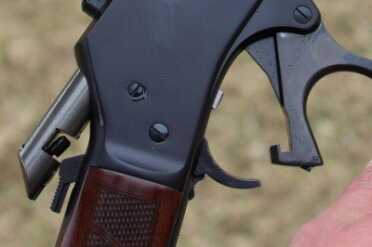
Here you can see how the lever itself lines up with the bolt, which holds it in place and clears the safety mechanism.
[/one_half_last]
[one_half]
[/one_half][one_half_last]
[/one_half_last]
[one_half]
[/one_half][one_half_last]
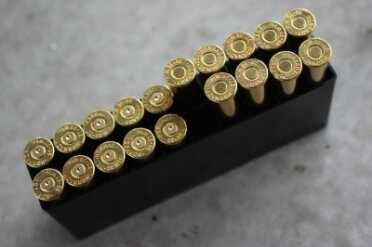
Saving the brass and keeping it organized saves a lot of time later, and keeps it from getting damaged.
[/one_half_last]
[one_half]
[/one_half][one_half_last][/one_half_last]

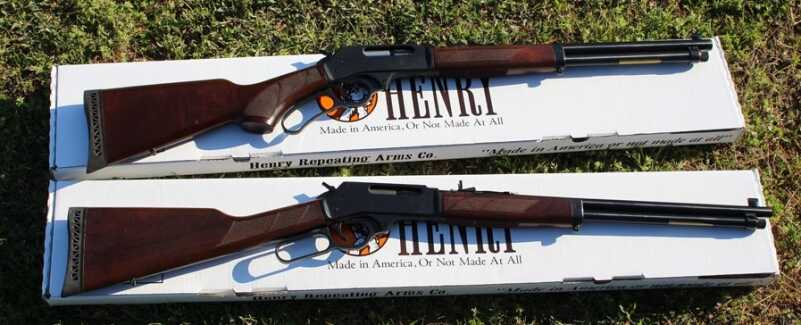
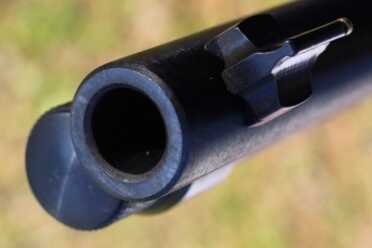
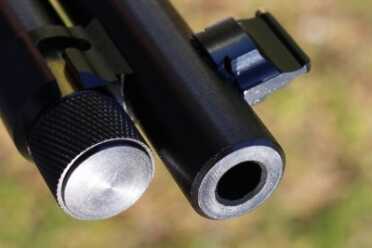

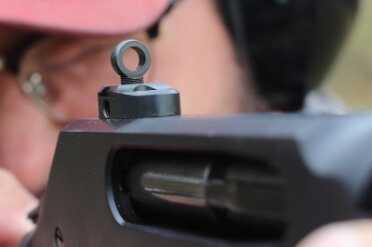
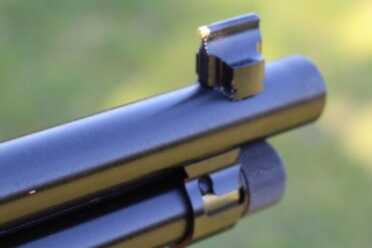

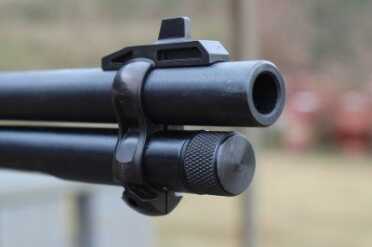

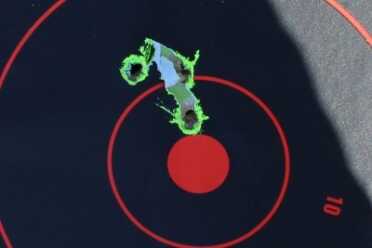



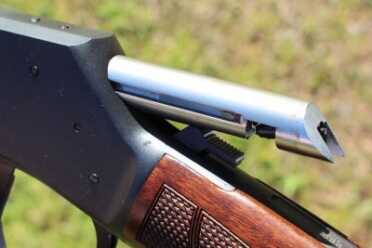
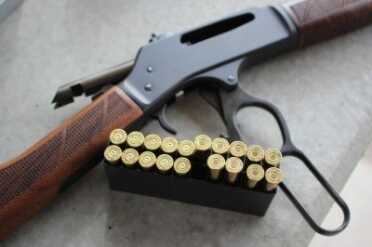
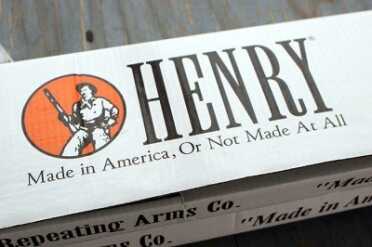

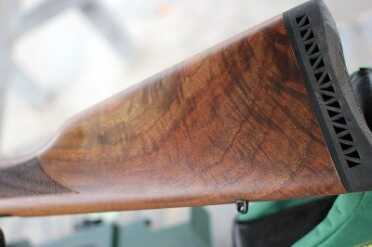
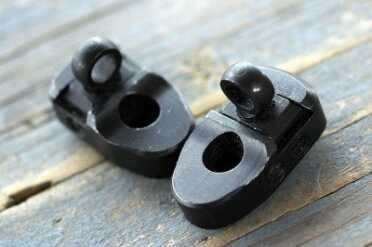
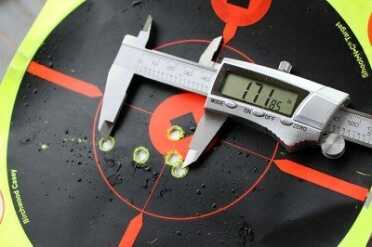

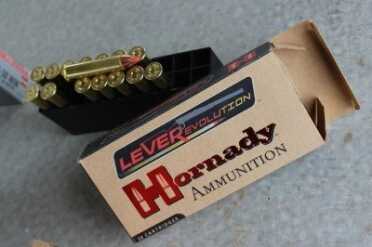

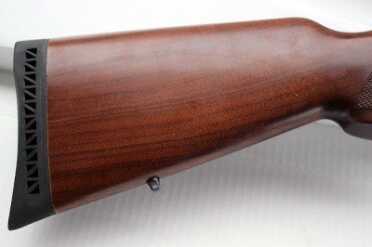
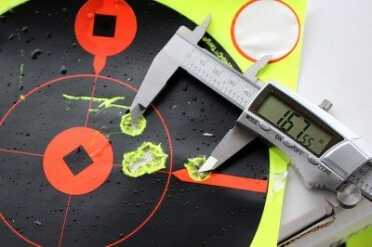

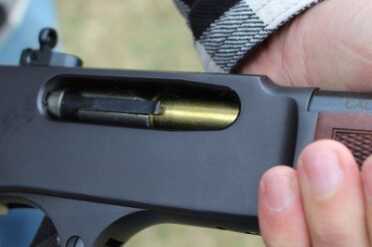

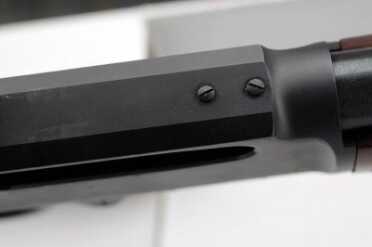
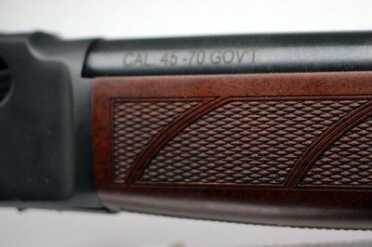
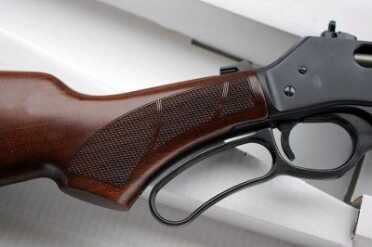
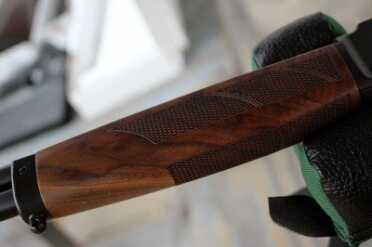
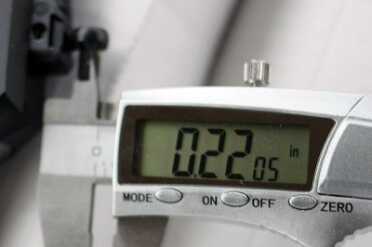
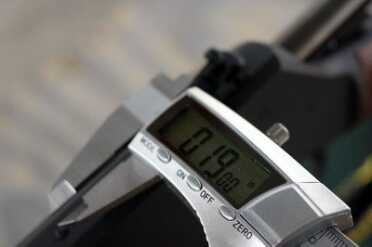
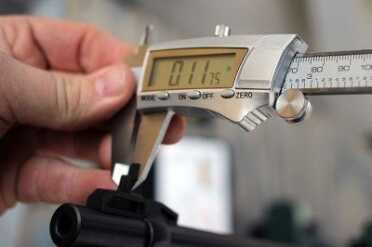
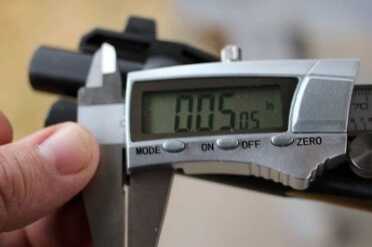

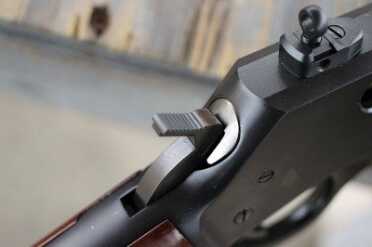
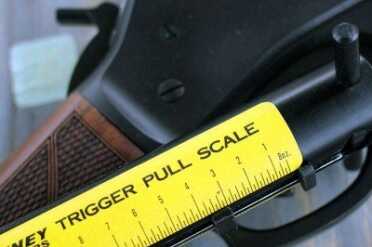
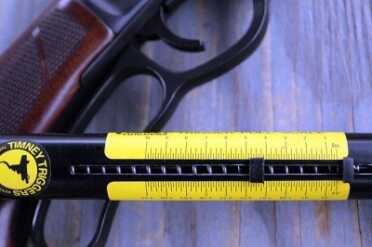


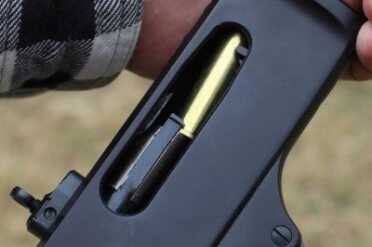
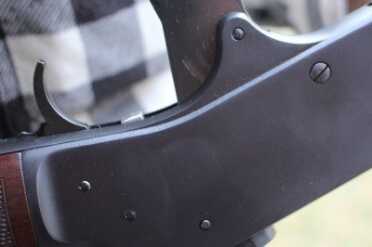

rear site for 4570 gov windchester model 1886 elevater site
just got a henry 45-70 010a whats a good load useing 350gr hornady ,h4198, cci primers
other than that try 405 gr
I own three Henry rifles and am planning for a fourth. Personally, I get so darned tired of hearing people complain about Henry’s being expensive. That is total B/S!!! If one compares apples to apples the Henry actually gives you more than any other company and yes, it is made in America. Which I wish they would say made in the U.S.A. since Canada, Chile and Argentina are also in America, the North, and the South American continent. Henry Repeating Arms makes a great gun and they offer many, many price points of various calibers. So I sincerely don’t have any earthly idea where people get this crap from? If I owned the company, I would increase pricing 10% across the board. Keep up the excellent work Henry Repeating Arms Company.
Most likely the best lever action of the 1880’s, most of you fellows never heard of it.
The BULLARD REPEATING RIFLE.
The magazine tube is charged from the bottom, forward section of receive.
Internally the action resembles the Browning BLR.
It says from the Article I have a reprint of the Bullard Arms Catalog, in the 1953-1954 Gun Guide, it was the fastest repeater
12 shots in 5 seconds and the most accurate, also it had a magazine cut-off, you could load single cartridges through the bottom, while the magazine was full or through the top ejection port, also in 45-70 Govt. it could chamber and shoot military ammunition. 45-70-405 and the 45-70-500 bullets rise about 13inches at 200 yards and will penetrate 21 inches of pine at 50 yards. extreme range of bullet is 3,680 yards…… They also state that a bullet from the Bullard Rifle using regular U.S. CARTRIDGE ( 45 cal. 70 grain of powder) has at a distance of 3,000 yards from the muzzle of the gun, penetrated a three inch spruce plank and eight inches of sand. remember this is black powder using balloon head shell casings.
A 45-70 or the 30-30 will kill a human or critter well beyond 100 yards.
Would like to know if you make,the Henry 45.70 caliber but having the brass reciever and high polished long barrel in chrome
I have a new h010 cch in 45-70 and shoot 405 gr. cast hand loads through it,
really like the buckhorn and bead sights on it and that octagon barrel .
I would take a 30-30 in that model anytime
Something I’ve learned over the years about shooting. Don’t blame the gun in your inconsistency in aiming. All of the complaints I’ve read go back to being consistent in point of aim. The more you fire the same rifle the better you become with that rifle.
One of the other biggest issues I’ve seen is the person firing fails to ensure the sights are set to the bore. Taking time to do this will lessen the need for Kentucky windage. Bore sight alignment is the first & foremost thing to check. Never assume a new gun has those sights already set to the bore. Check them yourself.
Pricing??? Well, if you are wanting to support American workers pay the price and stop complaining. Most rifle manufacturers have their components made in Japan by a lazer guided system which is far cheaper. The machines used are quite expensive. The initial cost for any US company to by the machine would have an initial impact to the cost being paid for by the consumer or a loss of profits by the company. Think about who’s economy you want to support… Japanese or American??? That will be the deciding factor in what you are willing to pay.
Well I have been emailing “Henry” to build a “Fancy” Hunting 30.30 rifle to pass down to my Grand-kids, but they just started to make them this year but priced them “WAY” out of range for most of us!! I also have heard that the 30-30’s were very bad at accuracy… But it doesn’t matter because only the richest 1% can afford them!!! What good is a overpriced gun that can’t hit the side of the barn??? I agree with some of the other post and wish “Marlin” Or someone else would come out with a “Fancy” 30-30 that’s sub-MOA at 100yards and Sub-$700.00!!! (It’s not like their hand carved or anything as everything is don on a CNC Machine now a days!! What took someone 50 hours to do is don in 30 seconds!! I would like to see a picture of New England Woods and a Whitetail Deer on one side and then Western Mule deer and landscape on the other side… I used to shoot a 35 Marlin and it was a fine gun so if Marlin wants to make it in that I would buy it if it’s accurate and not over $700.00 Henry’s are-way overpriced for what you get!! Period!! I’m all for buying “Made in the USA”, And willing to even pay a little more to get that, but the Key word is “LITTLE”!! I’m not paying 3 times the price, and get half the quality!!! Oh, they sent me a price of over $1200.00
$1200. ?! I’m not sure where you looked or what you were looking at but, both “GunsAmerica” and Cabela’s list the 30-30 Henry lever guns for $779. GA for the steel receiver with round barrel and cab- for the brass receiver with octagon barrel. Well worth “Made in the USA” and now, the only lever guns to be made so.
No problem with 30-30 accuracy. 12 deer in the last 4 years from 50 to 175 yards all one shot kills.
So buy a non-fancy version. The Henry Big Boy in brass is $658 and the Marlin 30-30 is $500. The Henry is a real eye catcher that you can hand down to your children. It comes in 41 mag, 44 mag, 357 mag, 327 federal and 45 colt.
I find that peep sights, even ghost ring peeps are much more accurate at all ranges than open rear and gold bead. The aperture allows even old eyes to focus on the front sight. The sighting radius is also generally longer. To each his own. I like the old Winchesters and Marlins and they can be had for about the same money.
The problem is to find receiver sights that are easily adjustable, take one out to distance, and are affordable. These ghost ring sights only reinforce the false idea that a 30-30 is good only out to 150 yards. Receiver sights have a much longer sight radius and are therefore inherently more accurate, but you would think that someone out there would make something like the old tried-and-true M-1 sights marked out to a thousand yards. And after all they still shoot 45-70’s at 1000 yard competitions, eh? That I know of they don’t shoot 30-30’s at long distance competitions, and one chauvinist, burdened with dozens of long distance trophies, told me they wouldn’t even let me shoot my 30-30 at “their” range, but my 30 in. Winchester built by Dennis Olsen up in Montana (you know it’s just “a hundred yard brush gun,”) delivers a leverrevolution bullet in excess of 2600 fps and is supersonic out past 900 yards! What about that?
Now Mr. Olsen put tang sights on this that cost more than the ’70’s vintage pawn shop gun that I sent him to rebuild, but why doesn’t someone come up with a receiver sight that is suitable for long distance shooting? Isn’t the 30-30 a high powered rifle? Oh, I forgot, it’s just “a hundred yard brush gun.” Would anyone like to see what a 30-30 round does to a 12″ thick adobe wall? Goodness! JWC
The “older” Winchesters will out do any of these Henry rifles. Several years ago I bought a 32 Win. Special made in 1906 (Believe the same year the .32 came out) Had a very nice stock and a 26″ oct.. barrel. Would group 1 1/2 inches at 50 yds. with Win. factory ammo and the same with 170gr. cast bullets.at around 1,700fps. (No it didn’t lead) Fit and finish were excellent. Very smooth action. Only paid $600 for it too. Sadly I latter traded it at Cabelas for a Beretta shot gun. Did get $1,350 in trade for it. They don’t, and never will make them as good as the original Winchesters ( At least not under $2,000)
Ah…. 1.5″ at 50 yds is nothing. Henry does this easily.
All you’re getting is 1.5 inches at 50 yards?!!! And you think you’re beating Henry’s? Lol!!! I can get an inch sometimes under at 50 yards at I’m at 2 to 2.5 inches at 100 yards, and that’s more due to my eyes than the rifle.
And yes, that is with my Henry, and I regularly shoot 8 inch steel at 200 yards with it.
I love all the Henry lever actions but I sure would like to see a full review on the Henry “Original”. 13 rounds of .44-40 & a truly gorgeous rifle.
Like this one?
https://www.gunsamerica.com/blog/the-henry-original-new-old-gun-review/
Where is my post, save your money and don’t buy Henry.
I bought a Henry Lever Action .22 with an octagon barrel and a friend of mine has a Henry Lever Action .22 with a round barrel and both .22 rifles shot almost identical. They can’t group three shoots and I have a Nikon scope on mine and I though it was the scope but putting a Leupold scope on the rifle it shoot the same. The Henry Rifle is a nice looking rifle but can’t shoot and I wish I could return it. They offer a life time warranty but what good is that if you don’t shoot an unshootable rifle. The photos in the picture is the way the rifle shoots and this is only at 25 yards, and friends also shoots the same. I have never owned a rifle a .22 rifle could not group at 25 or 50 yards. I anyone is considering owning a Henry save your money.
Then either both guns don’t shoot straight or you and your friend are bad shooters….
If it’s #1, this should be a no brainer. Send it back to Henry with a nice letter and ask them to test shoot it with their scope and see what happens. If it really is the gun then Henry will fix it. Have you done this????
Nicely done Sam.
I like the offerings from Henry so much… right up until the, well, everything involved in the muzzle on back past the retainer band.
Sight, mag caps or ends, magazine bands… It just gets so damn “clunky” up there.
Admittedly, this is an entirely aesthetic issue for me but they look like something from Turkey or Central Europe at that end.
Todd.
Really well thought out and well presented review…Thanks.
That being said, I have looked at Henry Rifles many times and I can never get past the rainbow trajectory of the calibers Henry chooses to offer them in. More than that I can never get past the sticker shock of what it costs to own one. These rifles should cost about half of what Henry sells them for. What’s “Made in America” mean to me? It means expensive, shoddy, unimaginative, workmanship. By Your own admission, Henry made these revisions due to Customer pressure. Maybe they should have thought of all this while they were building the original rifle in the first place…? Have You ever tried to load a Henry in a hurry? It literally cannot be done. For the price of a Henry Yellow Boy that can barely hold a 5″ group, I can buy a used Savage 99, with true High Power Ballistics. (my .308 99, which I paid $600 for, will shoot MOA out to 150 yards.) My Marlin 336 is smoother, faster, better balanced and far more accurate than anything Henry has ever made. To top it off, it’s almost half the price of the Henry. The BLR is priced at the same price point and even though it’s made in Japan, in fit finish and ballistic performance, is a FAR superior firearm. For the record, any Winchester Lever made after 1965 is a piece of junk. Winchester has become the Poster Boy of how to ruin a Gun Company. Trading on the Made in America Logo is an act of desperation and to Me, it’s tacky.. It reminds Me of a petulant child refusing to be your friend unless you do it their way… Build it right, price it right and Made in America becomes a moot point… The problem with Henry Rifles is and always has been, that they offer an answer to a question Nobody is asking.
I can’t agree with you. I am a proud owner of a Henry H009 .30-30 and really like it. Mine has the ghost ring and I love it, don’t believe that I would like the new setup. As for BLR, it might be well built, but I am waiting for Henry to start marketing the Long Range .308. I also have Savages, one in .300 Sav and the other a .308. Wish that they were still as, to me, they were the finest lever ever made. Old Arthur Savage was way ahead of his time.
I currently own 4 99’s. Over the years (I’m 56) I’ve owned a dozen or so different 99’s at one time or another. I’m a lefty so there are a lot of Levers & Double Barrels in my Safe. I’ll agree with you on a couple of points…Arthur Savage was indeed a long way ahead of his time. I also think it would be cool if they still made them. That being said, owning these Icons with the knowledge that there will be no more, adds to the enjoyment of having them. Doesn’t hurt the pocket book either when it comes time to sell.
You will never see a Henry Rifle with high intensity cartridges like the .308 Winchester…..Period. Henry would have to retool their entire design. The action would have to be redesigned, including the bolt assembly and the barrel attachment. In the 70’s, when Henry brought back the Yellow Boy, Henry Rifles were initially meant as reproduction relics for the SASS ridiculousness in pistol cartridges only. It required huge investments in capital and R&D just to get them to the point where they can handle moderately pressured Rifle Cartridges to make some sort of an actual Hunting Platform out of them. Revamping them to handle high intensity cartridges would probably bankrupt the company.
I will never understand why anyone would fork out $1000.00 for a “rifle” who’s effective range & accuracy isn’t much better than Modern Archer Equipment. I have a Crossbow that is deadly out to 85 yards. My 30 year old Bear Cam bow is Accurate to 70 yards. Additionally…Archery Season is 4 months long where I live. Rifle season is 10 days. If I’m going to invest the $500 or so Dollars it takes to go Deer Hunting during Rifle Season…I’m taking a Rifle that I know I can hit with out to whatever reasonable range offers itself. For me that’s about 500 yards. Out here in the High Plains of Western Nebraska, 100 yards is a Chip Shot. It happens very seldom. Most Big Game out here are killed at ranges beyond 200 yards. At that kind of distance, the Henry is not only out of it’s depth, it’s worthless.
I guess I’ll be eating a little Crow in the near future…I just read this article…
http://www.ammoland.com/2015/12/hunt-with-henry-repeating-arms-made-in-wisconsin/#axzz46D2PWp7g
Should be interesting. I wonder what the price point will be?
That may be true in your opinion, but I guarantee you won’t outshoot me with my henry 30-30 with your marlin or winchester. I’m getting 2 moa at 100 yards with the semi Buckhorn iron s and I regularly shoot and have no problem hitting at 200 yards while shooting steel it’s 8 inches btw, and that’s plenty good for iron sights. I can comfortably shoot a deer at 200 yards with this rifle, as is. Also having had several marlins and winchester 94’s and 73’s, the henry is smoother than my marlins, but not quite as my winchester 94’s also it’s stronger than the winchesters, and just as strong as the marlins!!! Only complaint is the reloading, but I cRru a 44ag, and have gotten used to it. Also I paid 728.99 in the time of Corona and the others are up in that neighborhood as well, and I got brand new, nit used!!!
Hi, I’m a Hugh fan of the Henry rifles and company. I own two of there arms, a 22 mag golden boy I call it, and the 45 cal. lever pistol conversion styled like The old tv series, Steve McQueens bounty hunter . I’m nothing but a 60 year old kid I wanted one of those since the original show was aired,now 30 plus years later a dream has come to reality . Smooth operatimg guns and the best American made firearms.
I owned a Henry, fell for the hype about them being SASS capable, don’t fall for it. I had a problem and the tech from Henry just told me how wrong I was instead of helping. Would not feed well. Sold that thing and got a Winchester clone that eats everything I feed it. Their guns are very picky, and don’t count on their tech support.
I understand the reason for the sight changes. If you can replace the sights with what you want then no problems,Henry Rifle Company should give options to the buyer.I have two Henry’s and like the buck horn rear and brass bead front sights. Made in the USA !
Ghost ring/receiver sights are vastly better on a hunting rifle of this type than a funky buckhorn sight. Plus, the new front sight that sits up so high on a “pillar” is going to snag brush constantly and looks ridiculous. Not good changes.
Seeing as I own a henry 30-30 with those sights you had so much to say about, but I can tell you from experience, that your fears need not be entertained any further!!! None of those issues has been a problem so far, and the new semi Buckhorn sights are much more precise, and accurate.
Neither Garret or Big Bore list the Henry .45-70 as safe for their ammunition. These Henry’s are built for the low-power ammo mass produced because of the number of old and very old rifles still in service. My guess is that the top end Garrett or Buffalo Bore would leave you with a bunch of parts strung around, including mabey some of your body parts.. They both very specifically state exactly which rifles are safe for their loads. The price on these is ridiculously high, at least across the counter. The sights are a very bad joke. Brockman makes an outstanding front and rear sight set, which I put on my Marlin .45-70, along with LarRe QD mounts and base carrying a Leupold 1.5-5xs30 illuminated reticle. The Henry’s are cosmetically very nice, but I want a strong rifle that will handle a 500 grain bullet at 1900 fps. The idea of putting handgun loads in a rifle is for women over 100 years old, and children under two. I know they do have a .45-70, but until Gun Tests and Garrett and Buffalo Bore rate it as suitable for Cape Buffalo…for me it’s a moot point. I have my Marlin set up as I want it, and done by a gunsmith. Then I have somebody to go back on if there is a problem traceable to them. Besides Wild West Guns, there is another manufacturer of large loop levers, but the space is smaller. Most of us aren’t 6’3” like Chuck Connors and have hands like bear paws. They are trying, but it does no harms to make small modifications like sights. A camel could crawl through the rear sight, I do believe. As to action/bolt strength, an alloy of 2-3% copper and the rest being beryllium has much the same appearance as brass when brightly polished, and properly forged and heat treated runs at nearly 200,000 lbs. of pressure before breaking. Yes, Beryllium is poisonous as all get out, but you ain’t gonna eat it, just use it. There is a company named Berylco that makes hand tools of all kinds for use in explosive environments, and nowhere do they state you must wear a mask when using the tools, at least not for the tools in use. The environment may be deadly in many ways, but the tools are quite safe, and most importantly, very strong and totally non-sparking. I gave mine to our local fire department, as I am retired and no longer need them. Pretty is as pretty does, but a .44 magnum with a 6″ barrel will do anything within 100 yards, as will a .460 Rowlin (look at Brownell’s website). And yet, do enjoy your toys, boys –whatever trips your trigger.
420-gr SuperHardCast gas-checked Hammerhead at 1850-fps*
THIS AMMO IS RECOMMENDED FOR USE ONLY IN THE FOLLOWING MODERN FIREARMS: MARLIN, HENRY, SHILOH SHARPS, PEDERSOLI SHARPS, ENCORE, NEF, H&R, BROWNING, RUGER, AND WINCHESTER RIFLES. UNDER NO CIRCUMSTANCES SHOULD THIS AMMO BE FIRED IN ANY TRAPDOOR SPRINGFIELDS OR ANY OTHER FIREARMS NOT LISTED HERE!
Hah, ya beat me to it!
I think you have turned this upside down. It is the bullet companies that produce most ammo in old calibers “dumbed down” so as not to harm the old guns. I don’t know of any reputable co. that builds guns in these calibers that dumbs them down to the old black powder loads. That WOULD be unconscionable.
P.S. My Winchester 30-30 with a 30′ matchbgrade octagon barrel delivers a 110 gr. bullet from the barrel at just over the “magic” 3000 ft. per second–and with no damage to brass or rifle. Yes, it was an experiment, fine, but you can do it in these guns. My 160 grain bullet is still supersonic out past 900 yards with this gun. So, while you have to plan and play with it a little bit, you can shoot a 30-30 out to distance and there is no need to get discouraged when the old salts say to you, “Why don’t you get a real gun?” Either the 30-30 is a high powered 30 caliber rifle or it is not. Plus, why is it still around, eh? JWC
Gunblast.com on YOUTUBE shot Buffalo Bore through 45-70 Henry with no problems.
You complain too much. The loads the 45-70 will take are capable of toppling any animal in North America. Enough said.
Your post is filled with so much incorrect information that I don’t know where to start.
1) You stated “These Henry’s are built for the low-power ammo mass produced because of the number of old and very old rifles still in service” and that “My guess is that the top end Garrett or Buffalo Bore would leave you with a bunch of parts strung around, including mabey some of your body parts”
This is downright “fake news” as at least the Buffalo Bore can be safely used in Henry lever actions and that load is a bone crushing 2,000 fps and 3,597 ft-lbs of energy at the muzzle and even more energy if your rifle length results in greater velocities. I direct you to the following Buffalo Bore website link stating it’s ok to use this ammo in Henry lever actions. Link is here:
https://www.buffalobore.com/index.php?l=product_detail&p=151
And here’s what it says:
“Our 45-70 ammunition is externally identical to SAAMI spec 45-70 ammo, but internally it generates FAR more power and pressure. So, our 45-70 ammo will fit into ANY 45-70 firearm but is not safe in every 45-70 firearm. Its use should be limited to the following firearms:
All Marlin 1895 (1895 Marlins are all model 336 actions, chambered in 45-70) iterations made since 1972, all Browning 1885 and 1886 copies, Rossi Rio Grande, New England Arms Handi Rifle, T/C Encore, ALL falling block actions made of modern steel such as Ruger #1 and #3, Shiloh, Christian and Pedersoli Sharps, Henry Lever Action Rifles, all Winchester 1886 iterations made since 1915, CVA Centerfire Rifles and all Siamese Mauser bolt actions.”
Note that Henry lever actions can use it…….
2) As far as Garret here’s their webpage link:
http://www.garrettcartridges.com/4570540defendertech.html
You can click on their different ammo types and they all say “RECOMMENDED FOR USE ONLY IN MODERN MARLIN & HENRY RIFLES”. So…..modern Henry rifles can safely use this ammo which, by the way, is lower power than the above mentioned Buffalo Bore which is also safe for use in Henry lever action rifles…………
3) There is no such thing as 200,000 lbs of pressure. 200,000 lbs is a force. Pressure is force divided by area or lbs/sq inch so it’s 200,000 psi (pounds per sq inch) of pressure.
So…why did you say these two different types of high power ammo are unsafe to use in Henry rifles??????
Excellent update to a really good review. I have to disagree a bit with you, however, about the XS ghost ring sights. They work wonderfully for me even out to 100 yards. I have other rifles with brass bead and semi-buckhorn setups, and I like them just fine. For me, though, the ghost ring sights on my Henry .30-30 are just right. These are hunting rifles, not paper punchers.
Might note that the action MUST be closed when loading the magazine. Reading the owner manual specifies this, but since most of us think we know everything about guns and do not bother to read the manual this is an important piece of information. I locked up the action on my 45 LC by loading the mag with the rifle in “safe mode” with the action open. Had to disassemble the action to clear the stuck cartridge (wasted trip to the range).
Lesson learned ?
That is why they make the manuals.
Read the Manual first.
Right now Ron is probably saying boy that comment cut deep.. 🙂